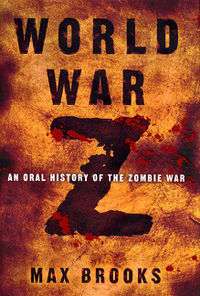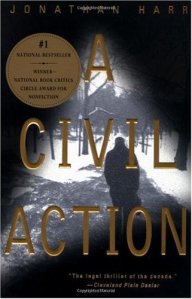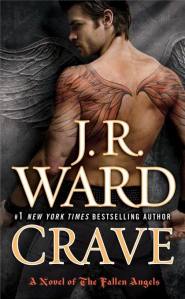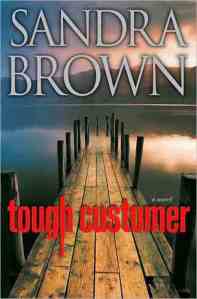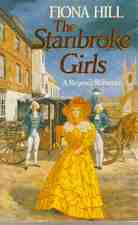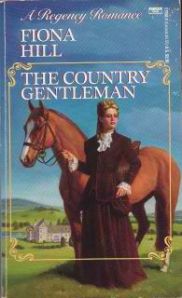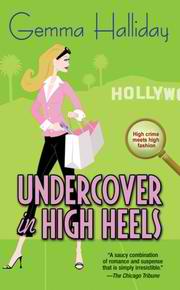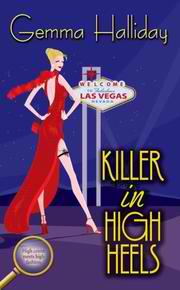A friend of mine came over last Thanksgiving and raved about World War Z. He’s a big Romero fan; personally, I’m a fan of The Walking Dead and Death Valley. But there have been heated discussions in my house about whether or not we would survive the Zombie Apocalypse (which my husband insists on referring to as the Zompocalypse) and how, so I have more than a passing interest in zombie lore. But I think even if you have no particular interest in zombies, World War Z is still well worth a read.
Like The Walking Dead, World War Z is not a story about the actual apocalypse so much as it is a story of humanity post-apocalypse, picking up where the zombie movies leave off. As such, it’s a story about humanity and human nature. But while the television show focuses on the travails of a particular set of characters, the book’s approach is more general in its nature; even historic, if you will.
The premise is that, ten years or so after the official end of the zombie wars, someone was tasked by the UN to gather first-hand reports about the zombie outbreak and the different ways people and countries around the world responded to it. After the interviews (and being unable to leave the human element in the “official” UN report), this reporter put them together in roughly chronological order to create this book, and through these interviews, we get the unfolding of the end of the world, zombie-style, and the way humanity fights back.
It’s a damn great ride. The stories seem very organic, and quite logical. When the tales address what people might do in a panic, or who might survive and why, the actions and reactions are based on such a solid understanding of people that everything makes sense, as much as something can in a nonsensical setting of a zombie-overrun world. There’s heartbreak, hope, terror, despair, sacrifice, greed, psychological strain and break, and even healing, and that list might actually apply to every single tale told. The thing I found most frustrating about the book is that every single story was fascinating and I was always left wanting; so much so, that if each were a movie, I’d sit right down and have a zombie movie marathon as soon as I could get a hold of each film. And each tale has enough in it to make a full, rich film.
World War Z actually is being made in to a movie starring Brad Pitt (as the reporter); and I really worry about the adaptation. The detail in the book is so rich, and the scope of the novel (a worldwide one) so broad, that I can’t see this being done as anything less than a series, with each interview constituting an episode. The filmmakers have stated they see this as a trilogy, and maybe it ultimately will be. But while there’s tons of stuff in the book, it’s not a huge investment to read it. It reads like a short story collection, with each interview creating its own special blend of characters and drama, and you can easily sit down and read it all at once, or extend it out piecemeal by interview for as long as you want, and get lots of food for thought and entertainment out of it. And because it is told in interview format, under the guise of gathering info for the historical records, fans of biographies and historical reads might get as much a kick out of it and fans of the zombie oeuvre.
A Civil Action by Jonathan Harr
There’s a reason I read a lot of genre fiction, mostly mystery and romance. As bad at things might get in those genres, there’s usually a good guy triumphing over the bad guy at the end, a new, loving partnership beginning, or some other thing that tells me there is hope in the world, despite challenges and obstacles.
Non-fiction doesn’t give me that. The real world, while there may be hope in it, and while I am an optimist by nature and do look for the silver lining and all that crap, is not, once everything is boiled down, a fair place. Some people are lucky, some are unlucky; some work hard and get screwed, some work hard and are rewarded, some don’t have to work at all and are blessed, or don’t work and reap what they (didn’t) sow. But sometimes things like talent, hard work, passion, and perseverance, don’t net an end result that brings the satisfaction, in the end, that I crave and get with the happily-ever-afters and good-triumphing-over-evil I find in romance and mystery fiction.
And that brings me to the book, A Civil Action. It is the tale of a case that began in a town north of Boston, where the two evil companies polluted the groundwater that then led to the illnesses and some deaths of the townspeople who drank the water. Were this fiction, the evil companies would be summarily punished, the good guys would triumph and become stronger people for it, and the book (if it were my type of book) would leave me with a strong sense of satisfaction and justice in the world.
Not quite.
Instead, the tale unfolds slowly, showing the struggles and heartbreak of the families who suffer the illnesses and death, how their cases slowly come to the attention of personal injury lawyer, Jan Schlichtmann (a real character, all right) and the absolutely draining process of bring the case to trial and seeing it through. The health issues started in the late 70’s and early 80’s; the last ruling on the case came in 1990 (not counting motions for appeal [denied] filed afterwards). The pace of the book picks up with the action, everything snowballing until you actually feel the drain of the hectic pace just from reading it; I can’t imagine actually living it. The author does a very good job at keeping what is an extremely complicated case fairly clear, and paints an extremely vivid picture of the struggles and costs of bringing this case to trial, along with a great portrait of people driven sometimes by good motives, and sometimes by bad, but always putting forth the best efforts they can manage to get to where they feel they need to be.
I picked this book up because I’m starting my second semester of law school, and our Civil Procedure professor recommended it as a glimpse of Civ Pro in action. After reading it, I think I would be more likely to describe it as the excruciating side of the civil justice system in action. Some of the rulings, especially toward the end of the saga, in light of other discoveries and concurrent results from the Environmental Protection Agency, who did successfully sue the two accused companies to pay for the clean-up of the environmental mess they made, are absolutely mind-boggling, and just highlights the fallibility of a system, that, whatever ideals it may aspire to, is still run by very fallible humans.
Nonetheless, despite the absolute astonishment I felt at some points in the reading, I’m not ready to give up hope quite yet. The fact of the matter is, there do exist those people out there willing to give justice a shot, even if the results far miserably short of the mark, and I commend those people for their amazing efforts, and for paving the way for the suckers like me who refuse to give up on the hope that the system, and the world, when trying to weigh out the balance of things, comes out slightly in favor of good, truth, and justice, no matter how much we fight and inhibit it along the way.
Crave by J. R. Ward
Last year (or it might have been this year, my reading’s all kind of a blur) I picked up the first in a new series by J. R. Ward, who writes the Black Dagger Brotherhood series (apparently a vampire series, none of which I’ve read) which was characterized as a novel of the Fallen Angels. I’ll all for the fight between good and evil (rooting for good, of course), so I picked it up. As this isn’t a review of that first book, I’ll just quickly summarize to say that Jim Heron, a Harley biker with all the attendant character attributes that might call to mind, is the man/soul picked to come back down to earth and play a game to win souls for good or evil, in a sort of best-of-seven series which will determine the fate of humanity. Or something like that.
The first book was interesting and entertaining, enough to leave me curious about the next in the series but not enough to go out and get it. Eventually I saw it in the library and brought it home.
Hot damn, I liked the next one. Maybe I’m just a sucker for the tortured hero, or the hot secret military outfit black ops guy, or something just clicked for me with this book’s protagonist, but I was sucked in by the character’s travails and really rooting for the the good guys to win this one.
The set up is this: Isaac Rothe was in the same covert government special ops unit (I must admit, I’m a sucker for the super-secret made-up special ops units in books) that our angel (?) Jim was once part of, only Isaac’s gone AWOL and is out for revenge or redemption, or maybe both. Except he gets Boston townie lawyer Grier Childe involved when she’s assigned as his public defender after he gets busted for amateur cage fighting (or whatever that fighting is in the movie Warrior. Did I mention I really dug Warrior? It has to be that tortured hero thing, I’m guessing. The physique doesn’t hurt, either). And our boy falls hard for Ms. Childe, and tries to keep her clear from the mess he’s in, but he’s dealing with forces, real and spiritual, beyond his control.
I must admit, it doesn’t sound all that great when I try to summarize it. But if you can suspend disbelief enough to buy the prospect of a fight between angels and the minions of Satan, then it’s worth a read. The “angels” aren’t your harp-playing, white-robe wearing flying beings of serenity, which jibes more for me with the idea of what an angel is supposed to be (a warrior of God) than a halo-wearing being. And the chemistry between Isaac and Grier is definitely smoldering, if you’re a fan of the more down-and-dirty end of the romance spectrum. And, I must admit, I was surprised by the outcome of this battle for souls, and very much looking forward to the next installment in the series.
Tough Customer by Sandra Brown
When I used to read more mystery than I did romance, one of my favorite genres was romantic suspense, a blend of mystery and romance (perfect for my tastes at the time). Sandra Brown was one of the authors I’d pick up when I got a chance, but as I discovered her late in my preference for romantic suspense, and she eventually became such a bestseller that she began to be published in hardcover (I can’t afford to feed my reading habit with anything other than mass market paperbacks) I didn’t really read to much written by her.
However, I did get a chance to read Tough Customer, which was lent to me. And I thoroughly enjoyed it. The book follows Dodge Hanley, a private investigator who was apparently a character in previous book (which I now want to read) as he travels to Texas to help out his daughter, whom he’s never had a relationship with, out of trouble that’s shown up on her doorstep. He comes at the request of the mother, who was the love of his life, and whom he hasn’t contacted in thirty years.
The daughter, Berry’s, story is mixed in with flashbacks that tell the story of how Caroline and Dodge loved and lost, and while the mystery picks up steam, it is Caroline and Dodge’s story that really hooks you in. How they got together, and how he lost her, become as gripping a story as what’s happening to Berry and the danger she’s in, and that all the characters are working at getting her out of. Add in some romantic tension between Berry and the deputy in charge of investigating her case, and there’s enough going on to keep the book packed with action and developments that entertain until the end.
Late Bloomer by Fern Michaels
I generally (and especially in the last few months of the year) read genre fiction–romance and mysteries, with the occasional fantasy or sci-fi thrown in. Any combination of the aforementioned is fantastic, too. But I’ll occasionally pick up a book that’s not a mass market paperback (or not yet, anyway) and take a chance on it.
Once such book was Late Bloomer. In it, the main character, Cady Jordan, comes back to the town she lived in until she was ten, that was also the scene of an accident that left her nearly paralyzed and another child dead. Except Cady doesn’t remember any of it. After the accident, she spent three years undergoing medical treatment and relearning how to walk, and hasn’t really been back to town since then. She comes back because her grandmother’s health is failing; her grandmother, a former movie star, wants Cady to come back to try to regain her memory and resolve the issues in her life.
The book actually begins with the accident occurring. The reader knows from the get-go exactly what happened on that fateful day. After finishing the book, I’m not sure that was the best way to go. You follow along as Cady comes home, wants to reconnect with her friends who were with her that day, starts remembering bits and pieces of the accident, and becomes a more confident woman. The problem is, you hardly, if ever, saw Cady not being a confident young woman; you already know which characters are lying to her and when, and what it is they’re trying to hide, and Cady’s revelations and remembrances are rather anti-climatic since you read about them already anyway.
Maybe I expected to have more suspense involved because the story played out, for me as a reader, more as a mystery than a character study, but I think the book was intended to be a character study and feel it failed in that respect. The Cady at the end of the novel was the Cady at the beginning of the novel, except with a recovered memory and better wardrobe. The characters whose developments were more interesting were secondary or even more minor characters, so there wasn’t enough focus on them to make the story really meaty, and since the reader knows what happened to Cady from the beginning of the book, there’s not much suspense or tension surrounding Cady’s process of discovery.
It may simply boil down to Cady being the least interesting of all the characters in the book. She may be in place simply to have all the characters react off her, sort of like the spoke of a wheel, but I just never fully invested in her recovery as much as I invested in the trip of other characters, and so making Cady the central character weakened the book for me overall.
The Stanbroke Girls by Fiona Hill
I was looking for info on this book and read Amazon review that described this book as poking fun at Regency novels while still doing justice to the genre, and that this book was a twist on Pride and Prejudice. It’s not a bad description, though I personally wouldn’t go so far as to characterize the book that way. But like I mentioned in the review I wrote for another Fiona Hill book, my favorite feature of her writing is her tongue-in-cheek narration, which I suppose is the equivalent at poking fun at Regency tropes while still doing justice to the genre.
I think the comparison to Pride and Prejudice is a little stretchy, however, although there are similar elements, but some are common to most, if not all Regency novels, and others share only a superficial likeness. The Stanbroke girls are sisters, Lady Elizabeth (okay, maybe a definite nod to Lizzie Bennet) and Lady Isabella, who along with their friend Amy, all come out this Season and so, of course, are all looking for husbands. The eligible Lord Marchmont, Earl, has finally agreed to look for a bride, mostly to make sure his rakish cousin, Jeffrey de Guerre (the equivalent to Wickham) doesn’t inherit. Jeffrey, however, finds prey in the form of Lady Isabella (probably the equivalent to Lydia) and sets to her wooing (or ruination, depending on who you’re asking).
The reason I say this isn’t a Pride and Prejudice knockoff or twist, though, is because P&P was really about Lizzie and Darcy, their misunderstandings and the growth of their characters and relationship. The Stanbroke Girls, while using the same sort of plot device (the potentially ruinous elopement) is more of a farce than a character study. There’s a cast of multiple characters here, none of whom is really the focus to the exclusion or minimization of any others, and it’s the action that propels the story, not the character growth (unlike the other Hill novel I reviewed, The Country Gentleman). But it’s still a fun read and enjoyable read, and Hill’s gift of characterization, even when not used at full force here, is still enough to get me to root for all the characters to end well, even the silly elopers.
The Country Gentleman by Fiona Hill
I was at a friend’s house complaining about the bad rap romance gets, and expounding on how much I’ve learned from historical romance, when, upon mentioning I read Regency novels, he asked me if I would mind if he gave me a couple. Of course I wouldn’t, and give me a couple he did (his mother knows the author, and he’d intended to give them to another friend who read Regencies, since he himself did not).
And thus began my introduction to Fiona Hill, who writes Regencies in the Georgette Heyer vein (who writes Regencies that read like they came from a contemporary of Austen’s, and not a modern writer who just sets her modern-day-like romance in the Regency period. Not that I have any problem with that if it’s well done). And I am ever grateful to my friend for introducing me to this lovely author.
I’ve read Georgette Heyer, who is considered to be the queen of Regency romance (amongst modern-day authors), and I have liked her books, but to varying degree. I’ve never loved them, though maybe one came close. I read two of Hill’s, however (and will be reviewing both) and loved both. Hill’s gift, in my eyes, is the tongue-in-cheek humor she imbues her narrator with, that allows us to see the foibles of the character without laughing at them, while still caring about them and rooting for them, silly though they may be. If I had to pick an Austen book that Fiona Hill might have written, and written well, it would be Emma.
But it’s not only Hill’s writing style that makes her books so enjoyable. She writes really rich and well-developed characters, who are so clearly defined that a description of a physical twitch of a character’s tells us more about what that character’s feeling or thinking than would paragraphs of exposition.
One of the reasons I enjoyed this book particularly is because of that aforementioned strong characterization of Hill’s. A Country Gentleman is the story of Anne Guilfoyle, who loses her fortune but timely inherits a country farm that she moves to forthwith, and the neighbors she encounters. She’s full of the haughtiness of a woman with her place in London society firmly established, and looks down on her country neighbors, who are better than she thinks they are (all of which is shown, not told). The story develops from there, and you want, from early on, the characters to come to worthy ends. Hill manages to do this, naturally and very satisfactorily, and entertainingly the whole way.
Alibi in High Heels by Gemma Halliday
Fourth in the High Heels series finds Maddie jetting off to Paris, about to get her big break. However, trouble ensues when one of her creations is used as a murder weapon, placing Maddie on the suspect list of a murder investigation in Paris. Also creating trouble: the presence of tabloid reporter/romantic tension bringer Felix and the absence of hunky cop/commitmentphobe boyfriend Jack.
Despite the European setting, the usual cast of characters is present: mom and mom’s wacky best friend (even mom gets a sidekick!) having come with Maddie to Paris, and Maddie’s best friend flying in to replace the murdered model in the show Maddie’s working on. Jack eventually follows her to keep her out of trouble, and Felix the reporter is already covering this. The investigation in this book is more important than it was in the last, seeing as Maddie needs to save her own butt this time around, and that makes the book work better as a mystery than did the third installment, where the mystery touched none of the standard set of characters.
But like with the last two, I enjoyed the character developments more than the mystery. The relationship between Maddie and Jack, and the tension between Maddie and Felix, made me really want to keep reading to see what developed. Add in Maddie’s loving and well-intentioned family and friends, and you have a warm, fun read, keeping up the breeziness in tone of the first three books. However, I was a bit surprised by the end (not the resolution of the mystery, but of where the characters ended up), which was somewhat clichéd and did seem a bit forced, enough so that while I did start the next book (the fifth in the series), I have yet to finish it because I’m not sure how invested I am in the characters anymore. I think the reader’s reaction to the end of this book will have a lot to do with where they want to see Maddie’s relationships go in the next one. I’m not sure I’m convinced by this book’s ending to keep taking the ride with Maddie.
Undercover in High Heels by Gemma Halliday
Third in the High Heels series following Maddie Springer, shoe designer and amateur sleuth, finds us back in Los Angeles, and in the thick of Hollywood land. Maddie’s loyal best friend, who thinks more highly of Maddie’s sleuthing abilities than I do, convinces her to take a job as a wardrobe assistant on the set of the television series she’s working on, which is a Desperate Housewives-style show called Magnolia Lane. She does so, over the objections of Jack Ramirez, the cop she’s been sort of seeing since book one, who’s been assigned to the Magnolia Lane actress receiving the death threats Maddie’s investigating.
In keeping with the tone previously established, zaniness and wacky characters abound, and the read remains fun and breezy, but my favorite part of this story was the introduction of a tabloid reporter who ramps up the romantic tension in the book, and an absolutely hilarious cyber scandal Maddie stumbles into feet first in the course of her investigation.
In this third installment, I must admit I was hardly invested in the mystery itself; the characters the mystery involves aren’t really major elements and most are rather unlikeable. But I stuck with the story because I absolutely loved spending time with the main cast of characters introduced in the first two books, and the developments there left me satisfied with the book and interested in more of their adventures. These books really are more about the gang of characters than they are about the mysteries, and readers who don’t find Maddie and her cohorts interesting may not get much out of this one.
Killer in High Heels by Gemma Halliday
The second entry in the saga of Maddie Springer, kids shoe designer and amateur sleuth, takes her out to Vegas to investigate a strange message she got on her answering machine–from a father she hasn’t seen since she was three–that ends with the sound of a gunshot. Along with her best friend-actress sidekick and flaming gay sidekick, she travels to Vegas to see what she can find out about her dad, and gets caught up in the middle of some plot involving mobsters and drag queens.
Again, zaniness abounds; again, it works because you care about the characters. Maddie doesn’t know much about her dad, whom her mom (loving but interfering, and stuck in an 80’s fashion warp) won’t talk about; and that’s what drives her to go to Vegas. The mystery is secondary to Maddie’s finding her father and their developing, tenuous relationship–as much as it can be in the middle of drag shows and Vegas. But you root for Maddie and her dad, and as crazy as their antics may get, still care and root for her and her friends to succeed as well.
Like the first book in the series, the book works because of its lovable characters and breezy tone, and is firmly in the fun, light read category. And, like the first book, it made me want to dive right into the next one.

